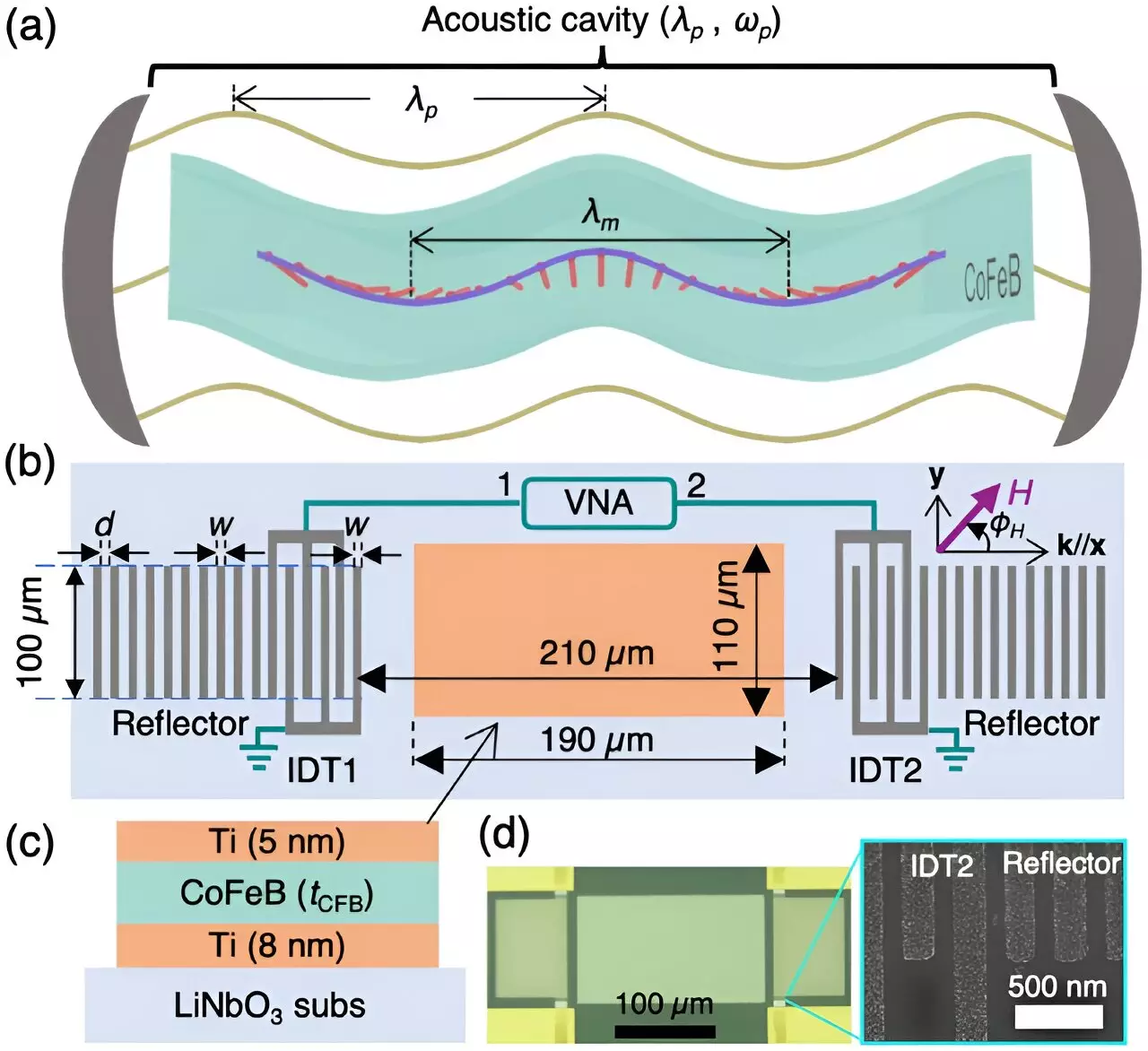In a groundbreaking study led by researchers from the RIKEN Center for Emergent Matter Science in Japan, a strong coupling between magnons and phonons was achieved in a thin film at room temperature. This accomplishment has significant implications for the development of hybrid wave-based devices that can store and manipulate information in innovative ways.
Most computing devices rely on the movement of electrons, which have inherent limitations in terms of speed and energy efficiency. As electrons travel, heat is generated, leading to energy losses and environmental concerns. In response to these challenges, scientists have been exploring alternative forms of energy, such as sound, light, and spin waves, to create more efficient and lossless devices.
In the study published in Physical Review Letters, researchers focused on magnons and phonons as two wave-like forms of energy. Magnons are quasiparticles that represent the collective excitation of spins, while phonons are acoustic phenomena made of surface waves propagating along the film. By combining these two states, the researchers aimed to create a novel hybrid state that could revolutionize information processing.
Previous attempts to couple sound waves with magnets faced challenges due to the mismatch between regular sound waves and magnets. The research team overcame this obstacle by utilizing shear sound waves, a type of sound wave that is better suited for interacting with magnets. The use of a nano-structured surface acoustic wave resonator played a crucial role in confining ultrasound waves to a specific location and enhancing shear sound waves, enabling a strong coupling between surface sound waves and magnets in the resonator.
Implications for Information Processing
The successful coupling of magnons and phonons in a Co20Fe60B20 film at room temperature opens up new possibilities for information processing. According to Jorge Puebla, one of the authors of the study, this work is expected to contribute to the study of coherently coupled magnon-phonon quasiparticles, paving the way for the development of hybrid wave-based information processing devices with minimal losses.
The research conducted by the team from the RIKEN Center for Emergent Matter Science represents a significant advancement in the field of information processing. By establishing a strong coupling between magnons and phonons in a thin film at room temperature, the researchers have laid the foundation for the development of more efficient and innovative wave-based devices. This breakthrough has the potential to revolutionize the way information is stored and manipulated, leading to exciting progress in information processing technologies.


Leave a Reply